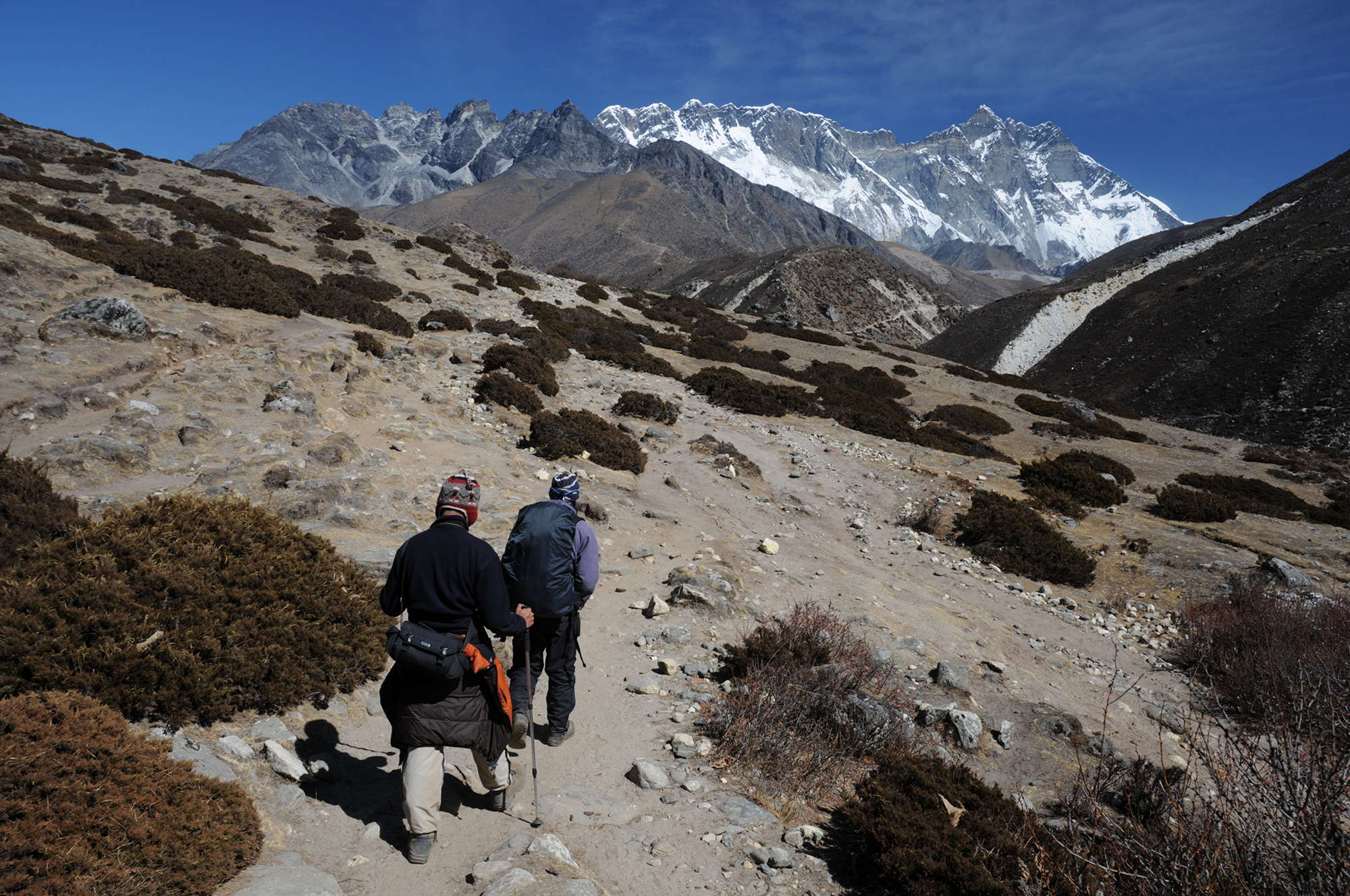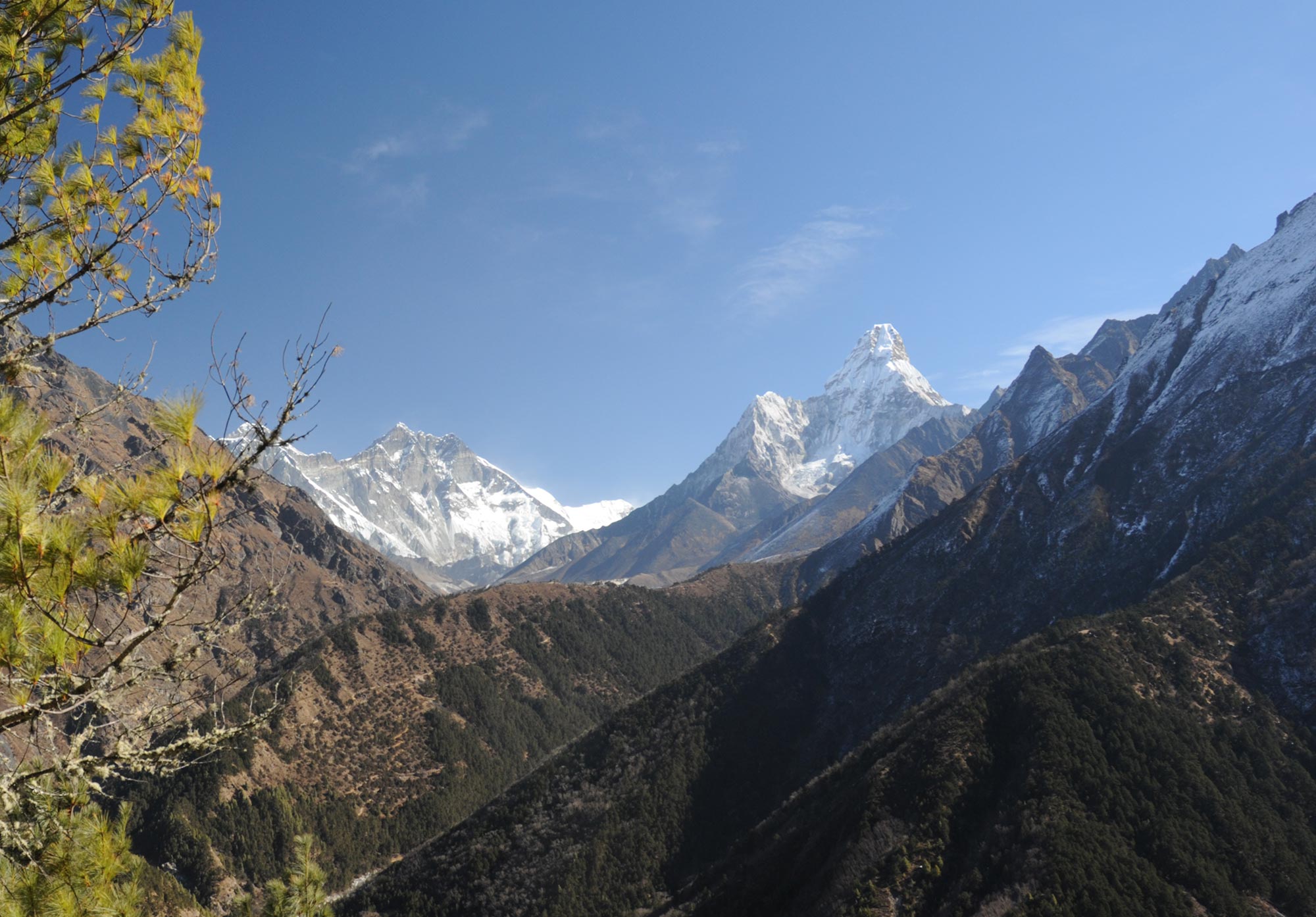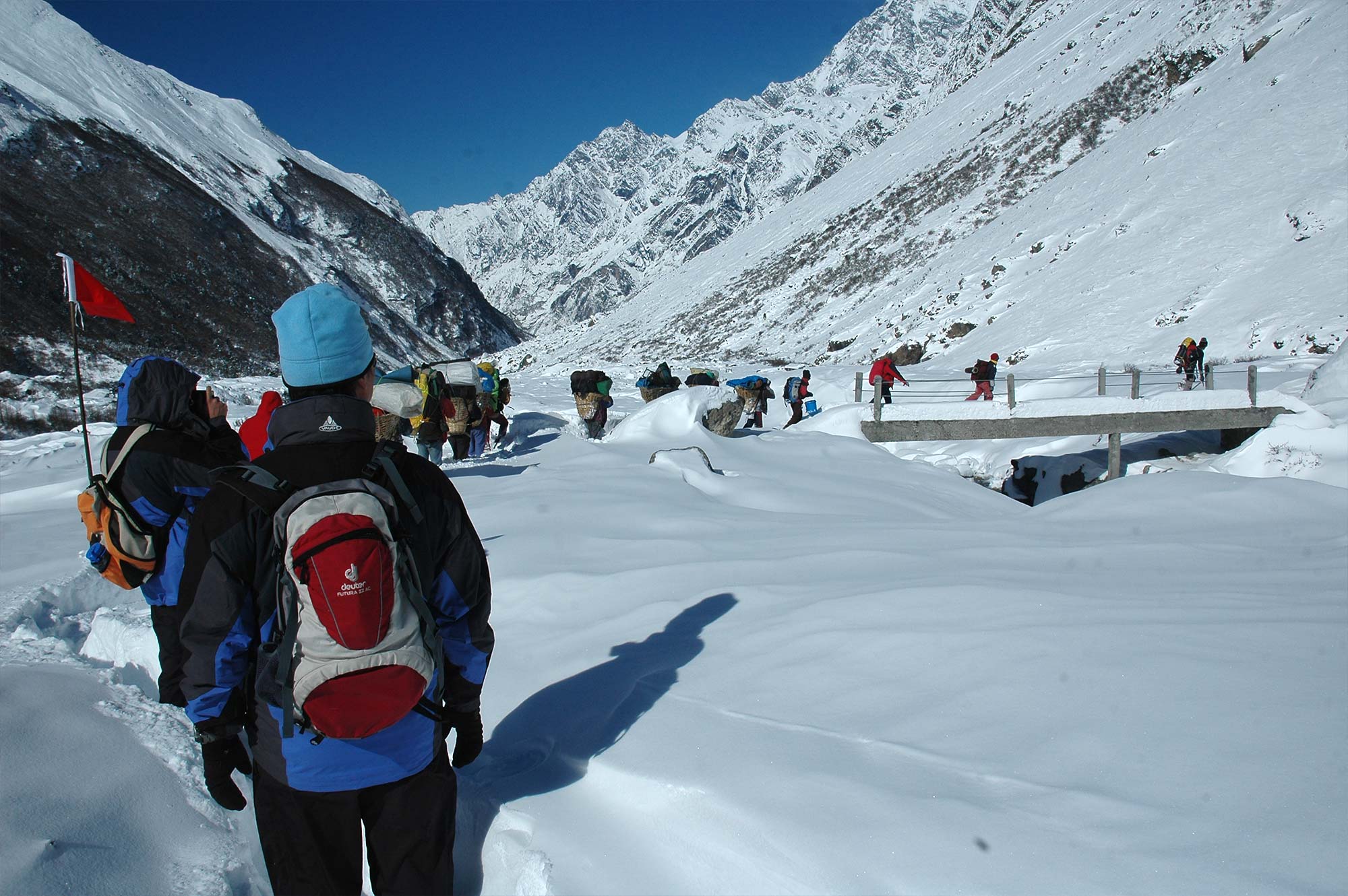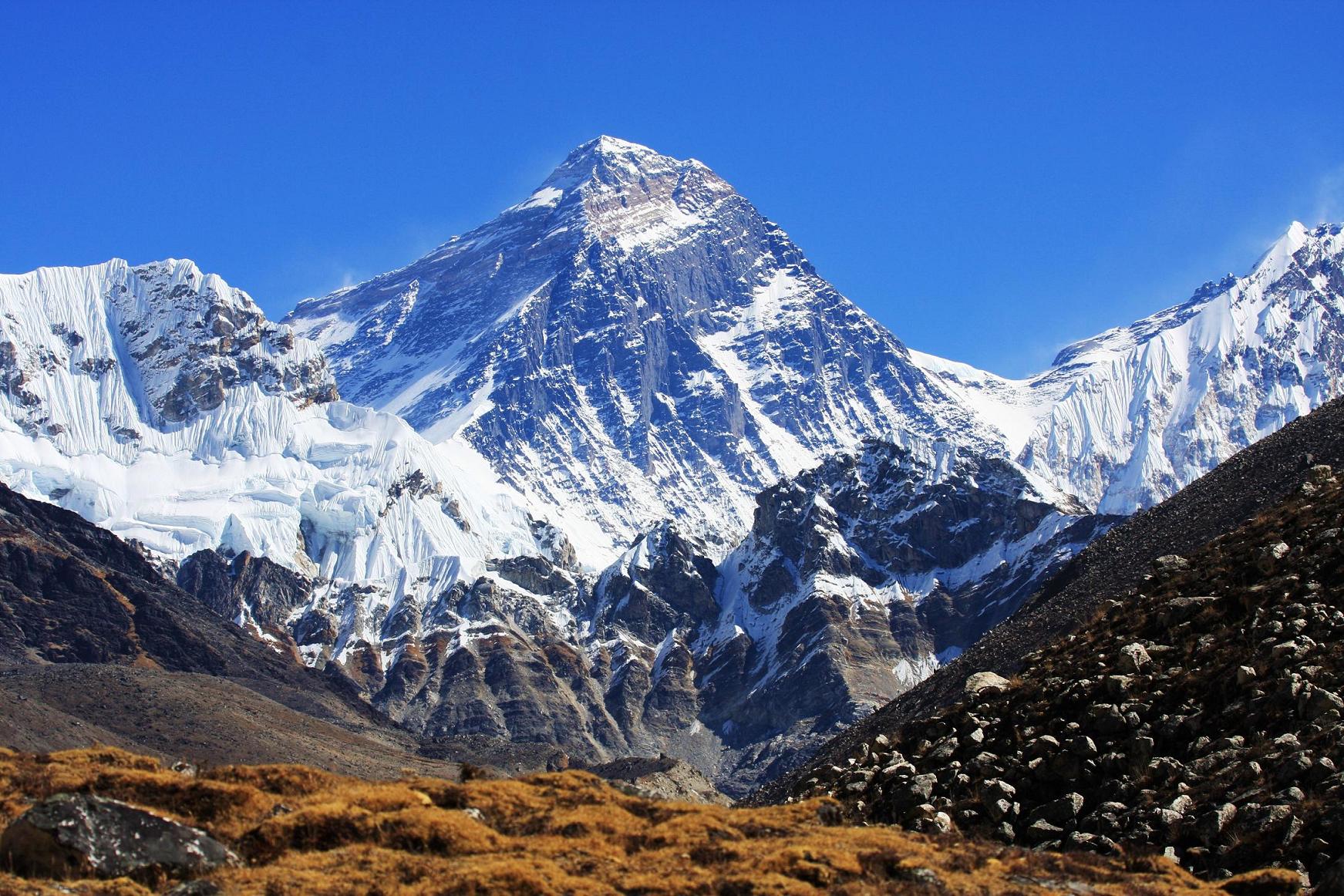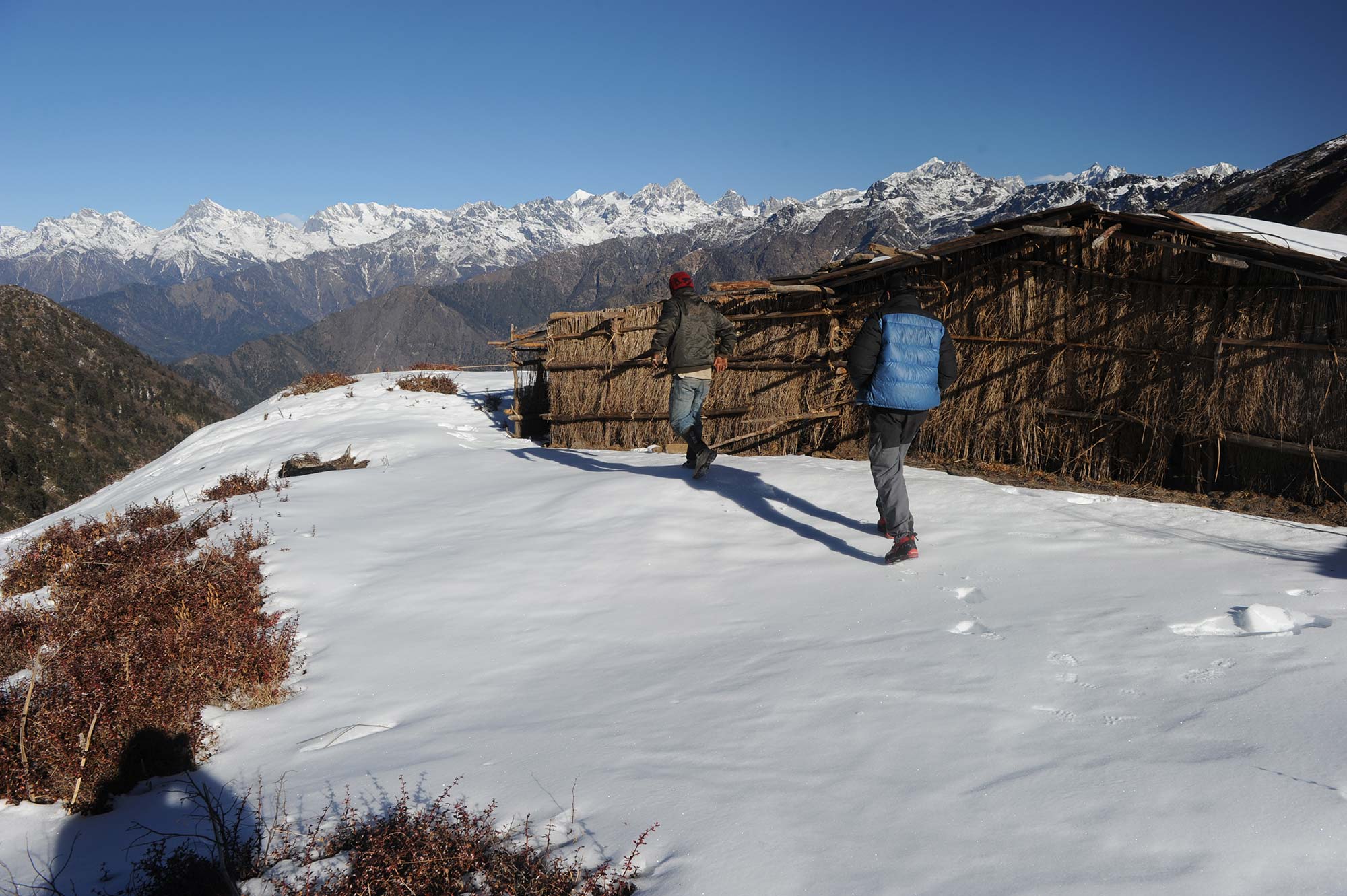Everest Region
The Khumbu or Everest region is the most popular trekking area in Nepal. It would probably be the most popular destination, but it is more difficult to get to Solu Khumbu than to the Annapurna area. To get near Everest, you must either walk for 10 days or fly to Lukla, a remote mountain airstrip where flights are notoriously unreliable.
Solu Khumbu is justifiably famous, not only for its proximity to the world’s highest mountain (8848 metres), but also for its Sherpa villages and monasteries. The primary goal of an Everest trek is the Everest base camp at an elevation of about 5340 metres. But you cannot see Everest from the base camp, so most trekkers climb Kala Pattar, an unassuming 5545-metre bump on the southern flank of Pumori (7145 metres).
Other than the problem of access, the other major complication to an Everest trek is the high likelihood of Acute Mountain Sickness (AMS). This potentially deadly disease, commonly known as altitude sickness, is caused by climbing too quickly to a high elevation. Be sure to read the section on mountain sickness in the Health & First Aid chapter if you are planning an Everest trek. If you suffer symptoms of altitude sickness and cannot go to base camp, you can still make a worthwhile trek to less ambitious destinations such as Namche Bazaar, the administrative headquarters of the Khumbu region; Khumjung or Thami, more typical Sherpa villages; or Tengpoche Monastery. From Tengpoche you will have an excellent view of Everest and its more spectacular neighbour Ama Dablam (6856 metres).
